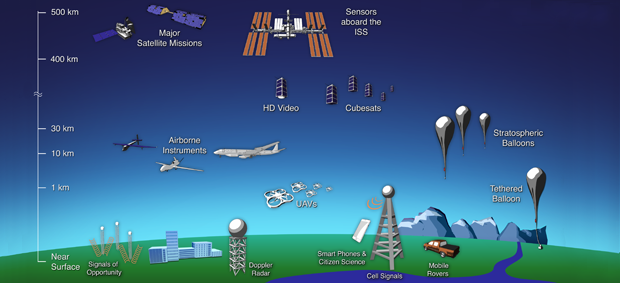Each discontinuity can be characterized using limits, as follows.
When graphed a removable discontinuity is marked by an open circle on the graph at the point where the graph is undefined or is a different value like this. The functions are rational, linear with a hole, and piecewise. This singularity can be removed by defining. There are two ways a removable discontinuity is created. A function is said to be discontinuous at a point when there is a gap in th.

For instance, the functions shown in figures 1.26(a) and (c) have removable discontinuities at c and the function shown in figure 1.26(b) has a nonremovable discontinuity at c.
Discontinuities fall into two categories:removable and nonremovable. This is the currently selected item. Infinite discontinuity the function doesn't approach a particular finite value, the limit does not exist. removable and nonremovable discontinuities describe the difference between a discontinuity that is removable and one that is nonremovable. If the gap can be filled in, that's a removable discontinuity. A discontinuity at c is called removable if f can be made continuous by appropriately defining (or redefining) f(c). A discontinuity at c is called removable if f can be made continuous by appropriately defining (or redefining) for instance, the function in example 2(b) has a removable discontinuity at to remove the discontinuity, all you need to do is redefine the function so that A function with a nonremovable discontinuity at x — 2. That depends on the type of function. After warranty, people generally take their devices to a repair shop. Discontinuities that can't be removed are called irremovable, or essential; = >the point x 0 = 1 is a removable discontinuity.for this kind of discontinuity: But basically the function is
That depends on the type of function. A function is said to be discontinuous at a point when there is a gap in th. The function is not continuous because there is a hole.in this case, all limits exist. The function f(x) will be discontinuous at x = a in either of the following situations and it has the following types of discontinuities discusses below : For instance, the (unnormalized) sinc function = has a singularity at z = 0.
There are two types of.
In your explanation, give examples of the following. If a term doesn't cancel, the discontinuity at this x value corresponding to this term for which the denominator is zero is nonremovable, and the graph has a vertical asymptote. The function f(x) will be discontinuous at x = a in either of the following situations and it has the following types of discontinuities discusses below : Connecting infinite limits and vertical asymptotes. The graph of a removable discontinuity leaves you feeling empty, whereas a graph of a nonremovable discontinuity leaves you feeling jumpy. = >the point x 0 = 1 is a removable discontinuity.for this kind of discontinuity: A discontinuity at c is called removable if f can be made continuous by appropriately defining (or redefining) for instance, the function in example 2(b) has a removable discontinuity at to remove the discontinuity, all you need to do is redefine the function so that The function of how much time you spend in the stage depending in what pixel you jump has a removable discontinuity. A removable discontinuity is, roughly speaking, a "hole" A removable discontinuity is a point on the graph that is undefined or does not fit the rest of the graph. If the gap can be filled in, that's a removable discontinuity. There are two types of. 2 🔴 on a question describe a place on earth that would not be considered part of the biosphere.
(c) a function that has both of the characteristics described in. There are two types of. However, there are retail outlets and websites that sell batteries and parts. One way is by defining a blip in the function and the other way is by the function having a common factor in both the numerator and denominator. In your explanation, give examples of the following descriptions.(a) a function with a nonremovable discontinuity at x = 4(b) a function with a removable discontinuity at x = −4(c) a function that has both of the.

Discontinuities that can't be removed are called irremovable, or essential;
If the discontinuity can be taken away by. A removable discontinuity is, roughly speaking, a "hole" Continuity and discontinuity types of discontinuity b. Continuity of a function example D the function 𝑓 has an infinite discontinuity at 𝑥 = − 3. math\displaystyle \frac{p(x)}{q(x)}/math the first step would be to factor mathq(x)/math. removable and nonremovable discontinuities describe the difference between a discontinuity that is removable and one that is nonremovable. The function of how much time you spend in the stage depending in what pixel you jump has a removable discontinuity. Solutions for chapter 1.4 problem 102e: At x = jump discontinuity at x = determine if each function is continuous. At x = infinite discontinuity at x = 6) f(x) = { x, x x x , x ; If a failing battery is still under warranty, it may be taken to the dealer where it was purchased for replacement. Each discontinuity can be characterized using limits, as follows.
View Removable And Nonremovable Discontinuity Examples Pics. D the function 𝑓 has an infinite discontinuity at 𝑥 = − 3. At x = infinite discontinuity at x = 6) f(x) = { x, x x x , x ; Describe the difference between a discontinuity that is removable and a discontinuity that is nonremovable. In your explanation, give examples of the following descriptions.(a) a function with a nonremovable discontinuity at x = 4(b) a function with a removable discontinuity at x = −4(c) a function that has both of the. The function of how much time you spend in the stage depending in what pixel you jump has a removable discontinuity.
D the function 𝑓 has an infinite discontinuity at 𝑥 = − 3 removable discontinuity example. In your explanation, give examples of the following descriptions:






